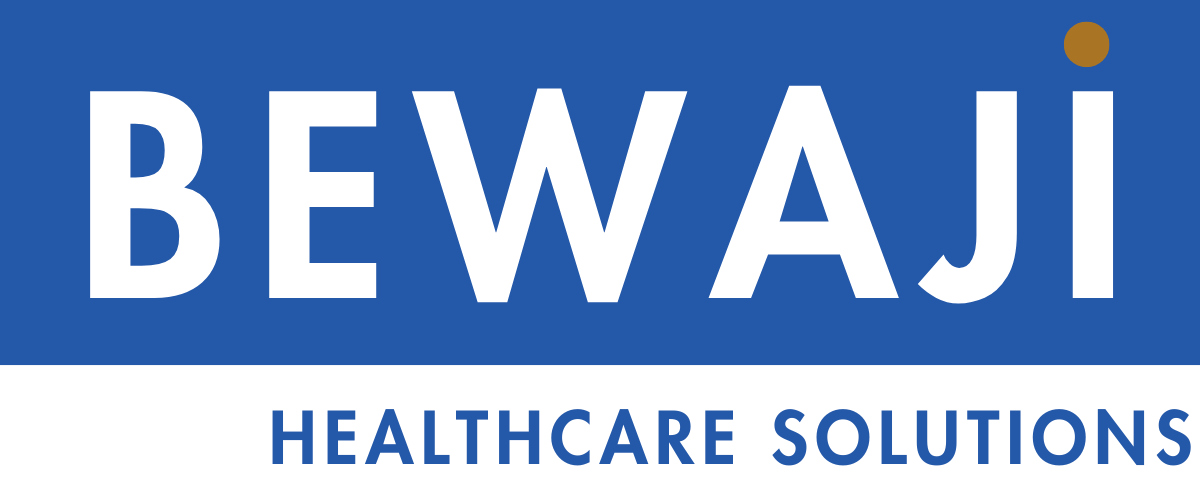Efficient inventory management is crucial in healthcare to ensure that medical supplies are available when needed, directly impacting patient care and operational efficiency. Traditional challenges in healthcare inventory management include a lack of real-time visibility, manual tracking, and frequent stockouts or overstocking, leading to wastage and inefficiencies. Leveraging technology and AI in healthcare inventory management changes how supplies are tracked, ordered, and distributed. Advanced systems enable real-time monitoring, predictive analytics, and automated replenishment, leading to improved accuracy, reduced waste, and enhanced decision-making capabilities, ultimately fostering a more resilient and efficient healthcare supply chain.
Real-Time Monitoring
Real-time inventory monitoring through IoT devices and RFID tags enables continuous visibility and precise tracking of medical supplies. These technologies provide exact location data and usage statistics, ensuring that healthcare facilities maintain accurate inventories and quickly locate needed items. Continuous inventory visibility prevents overstocking and stockouts by allowing real-time tracking of stock movements and consumption patterns. This enhanced visibility aids in maintaining optimal inventory levels, ensuring that necessary supplies are always available while avoiding excess stock.
For example, RFID tags attached to surgical instruments, medication packages, or blood bags provide real-time updates on their location and status. This level of detail is crucial for maintaining an accurate inventory and quickly locating needed items. In emergency scenarios, the ability to locate essential medical supplies instantly can significantly improve response times and patient outcomes.
Continuous Inventory Visibility
Real-time monitoring ensures continuous visibility of inventory levels, allowing healthcare facilities to track stock movements and consumption patterns as they happen. This visibility helps prevent both overstocking and stockouts by maintaining optimal inventory levels. With continuous data flow, inventory managers can instantly see which items are running low and which are overstocked, allowing them to make informed decisions about reordering and resource allocation.
For instance, a hospital using a real-time inventory management system can track the usage of personal protective equipment (PPE) during a pandemic. By continuously monitoring stock levels, the hospital can ensure that PPE is available for healthcare workers, avoiding shortages and unnecessary stockpiling. This balance is critical for managing costs and ensuring that resources are available where they are needed most.
Predictive Analytics
Predictive analytics is another critical component of advanced healthcare inventory management. AI-powered tools analyze historical usage data to forecast future demand accurately. This capability helps healthcare organizations anticipate needs, prepare inventory accordingly, and reduce the likelihood of shortages or excesses.
Demand Forecasting
Demand forecasting uses historical data, seasonality trends, and other relevant factors to predict future inventory needs. AI-powered predictive analytics tools can analyze vast amounts of data from electronic health records (EHRs), procurement systems, and other sources to generate accurate demand forecasts.
For example, during flu season, predictive analytics can forecast the increased need for influenza vaccines and antiviral medications. By anticipating this demand, healthcare providers can order sufficient supplies in advance, reducing the risk of stockouts and ensuring that patients receive timely treatment.
Trend Analysis and Anomaly Detection
Predictive analytics can identify trends and detect anomalies in inventory usage. For instance, if a particular item is being used at an unusual rate, the system can alert managers to investigate potential issues, such as misuse or diversion of supplies. This capability is crucial for maintaining inventory integrity and preventing losses.
Anomaly detection is also valuable for identifying emerging health threats. For example, a sudden spike in the use of specific medications or medical equipment could indicate the outbreak of a contagious disease. Early detection of such anomalies allows healthcare providers to respond proactively, potentially containing the spread of the disease and saving lives.
Automated Ordering Systems
Automated ordering systems leverage AI algorithms to monitor inventory levels continuously. When the stock of a particular item falls below a specified threshold, the system generates an order and sends it directly to the supplier. This automation reduces the risk of human error and ensures that supplies are reordered promptly.
For instance, in a hospital setting, automated ordering systems can monitor the stock levels of critical medications. Suppose the system detects that a particular drug is running low. In that case, it can automatically place an order with the supplier, ensuring the medication is restocked before running out. This proactive approach minimizes the risk of stockouts and ensures that patients receive uninterrupted care.
Integration with Supply Chain Management Systems
A healthcare provider using an integrated supply chain management system can track the status of orders in real time, from placement to delivery. This visibility allows inventory managers to anticipate delays, manage supplier relationships more effectively, and ensure timely supplies. Additionally, integration with suppliers’ systems can enable automated updates on order status, reducing the need for manual follow-ups.
Improved Accuracy and Data Integrity
Automation in inventory management reduces the risk of human error, ensuring consistently accurate and up-to-date inventory data. This enhanced data integrity is crucial for effective decision-making and maintaining the reliability of the supply chain. Accurate data is a foundation for making informed decisions about procurement, storage, and distribution of supplies, ultimately leading to better resource utilization and improved patient care.
Reduction of Human Error
Human error is a significant challenge in manual inventory management processes. Data entry, counting, and order placement errors can lead to inaccuracies in inventory records, resulting in stockouts or overstocking. Automation reduces the risk of such errors by eliminating manual tasks and ensuring that inventory data is consistently accurate.
For instance, barcode scanning systems can automatically record the movement of supplies in and out of inventory, reducing the likelihood of mistakes. These systems can also validate data entry, ensuring that the correct information is recorded every time.
Enhanced Data Integrity
Advanced technology ensures that inventory data is consistently accurate and up-to-date. Accurate data is crucial for effective decision-making and maintaining the supply chain’s reliability. Enhanced data integrity allows healthcare organizations to trust their inventory records and make informed procurement, storage, and distribution decisions.
For example, an automated inventory management system can continuously synchronize data across multiple departments and locations, ensuring that everyone has access to the same accurate information. This synchronization reduces discrepancies and enhances collaboration across the organization.
Reduced Waste and Efficient Resource Utilization
Real-time tracking and predictive analytics effectively manage the expiration dates of medical supplies, minimizing waste due to expired items. Efficient inventory management prevents overstocking and underutilization, optimizing resource use. By ensuring that older stock is used first and avoiding unnecessary excess, healthcare organizations can significantly reduce waste, leading to cost savings and increased operational efficiency.
Minimized Expiry of Medical Supplies
One of the primary causes of waste in healthcare inventory management is the expiration of medical supplies. Real-time tracking and predictive analytics help manage the expiration dates of medical supplies by ensuring that older stock is used first. This approach, known as the “first-in, first-out” (FIFO) method, minimizes waste due to expired items.
For example, an automated inventory management system can track the expiration dates of all supplies and alert staff when items are nearing their expiration date. This proactive approach allows healthcare providers to use supplies before expiration, reducing waste and saving costs.
Efficient Resource Utilization
Efficient inventory management ensures that resources are used optimally. By preventing overstocking and underutilization of supplies, healthcare organizations can better use their resources and reduce overall waste. This efficient use of resources translates to cost savings and improved operational efficiency.
For instance, predictive analytics can help healthcare providers identify the optimal order quantities for each item based on historical usage data. By ordering the right supplies, providers can avoid overstocking, which ties up capital and increases the risk of waste. Additionally, efficient resource utilization ensures that supplies are available when needed, improving patient care and satisfaction.
Enhanced Decision-Making Capabilities
AI and advanced technologies provide valuable insights into inventory trends and usage patterns, enabling healthcare managers to make informed decisions about inventory management. These data-driven insights support strategic planning and resource allocation, ensuring that critical supplies are available when needed and inventory management processes align with overall operational goals. Enhanced decision-making capabilities contribute to a more resilient and efficient healthcare supply chain.
Data-Driven Insights
AI and advanced technologies provide valuable insights into inventory trends and usage patterns. These insights enable healthcare managers to make informed decisions regarding procurement, storage, and distribution of supplies. For example, AI can analyze data from electronic health records (EHRs) and other sources to identify patterns in supply usage, helping managers anticipate future needs and adjust their inventory practices accordingly.
Data-driven insights also support continuous improvement in inventory management processes. By analyzing trends and identifying areas for improvement, healthcare organizations can optimize their inventory practices and enhance overall efficiency.
Strategic Planning and Resource Allocation
With accurate data and predictive analytics, healthcare organizations can strategically plan for future needs and allocate resources more effectively. This ensures that critical supplies are available when needed and that inventory management processes are aligned with overall operational goals.
For example, a healthcare provider using predictive analytics can forecast the demand for seasonal supplies, such as flu vaccines. The provider can ensure that vaccines are available for patients during flu season by planning ahead and ordering the necessary quantities. This strategic approach minimizes the risk of shortages and improves patient care.
Fostering a Resilient and Efficient Supply Chain
Leveraging technology and AI enhances the resilience of the healthcare supply chain by enabling quick adaptation to changes in demand and supply conditions. This adaptability is crucial for maintaining continuous healthcare services, especially during emergencies. Technology-driven inventory management streamlines operations by automating routine tasks, reducing manual work, and enhancing efficiency. This allows healthcare staff to focus more on patient care and less on administrative tasks, further improving the resilience and efficiency of the supply chain.
Improved Supply Chain Resilience
Improving supply chain resilience involves ensuring that the supply chain can adapt quickly to changes in demand and supply conditions. Leveraging technology and AI enhances supply chain resilience by providing real-time data, predictive analytics, and automation capabilities.
For example, during the COVID-19 pandemic, healthcare providers that implemented advanced inventory management systems were better equipped to handle the surge in demand for medical supplies. These systems enabled providers to quickly assess inventory levels, identify shortages, and coordinate with suppliers to replenish stocks. This adaptability ensured critical supplies were available when needed, maintaining continuous healthcare services.
Streamlined Operations
Technology-driven inventory management streamlines operations by automating routine tasks, reducing manual work, and enhancing efficiency. Automated systems can handle inventory counting, order placement, and data entry, freeing healthcare staff to focus on more critical tasks.
For instance, an automated inventory management system can generate reports on stock levels, usage patterns, and order status, providing inventory managers with valuable insights without requiring manual data collection and analysis. This streamlined approach reduces the administrative burden on staff and improves overall operational efficiency.
Conclusion
Leveraging technology and AI in healthcare inventory management revolutionizes how supplies are tracked, ordered, and distributed. Advanced systems enable real-time monitoring, predictive analytics, and automated replenishment, improving accuracy, reducing waste, and enhancing decision-making capabilities. These technologies foster a more resilient and efficient healthcare supply chain, ensuring that critical supplies are available when needed and that inventory management processes align with overall operational goals. Healthcare organizations are encouraged to adopt these technologies to improve inventory management, ultimately transforming healthcare logistics and patient care. The future potential of technology in healthcare logistics is immense, promising further advancements in operational efficiency and patient outcomes.
In summary, technology and AI are transforming healthcare inventory management, providing healthcare organizations with the tools to optimize inventory practices, reduce costs, and improve patient care. By embracing these advanced technologies, healthcare providers can enhance their decision-making capabilities, reduce waste, and build a more resilient and efficient supply chain. The future of healthcare logistics is bright, with technology and AI driving continuous improvement and innovation.



